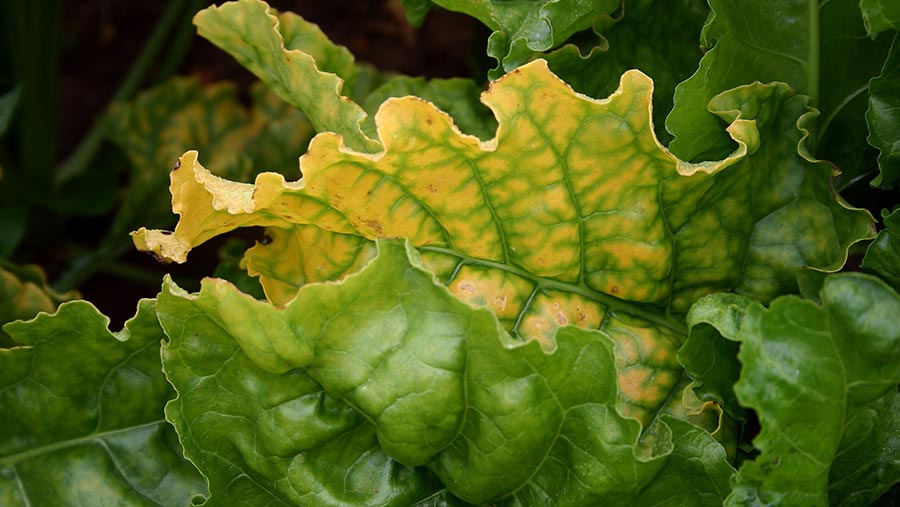Tips on growing beet without neonic seed treatments
 © Blackthorn Arable
© Blackthorn Arable The British Beet Research Organisation is stepping up its aphid monitoring and warning system this spring to help sugar beet growers cope with the virus yellows threat in the first season without neonicotinoids.
Following the loss of neonicotinoid seed treatments, the UK’s maritime climate means the risk to crops from virus-carrying aphids is high, warns Mark Stevens, who stresses that the need for monitoring has never been greater.
While BBRO’s early warning system includes issuing a virus yellows forecast, increasing the number of nationwide aphid trapping sites from 30 to 60 and providing real-time information on virus detection in aphids, growers will also have to be vigilant.
Spraying advice
New guidance is to limit aphid transfer from alternative hosts, monitor crops, count aphid numbers and treat at threshold – making use of one application of Teppeki (flonicamid), which is now approved for use in sugar beet.
The new product, which gives good aphid control, provides three weeks’ protection and has worked well in trials, Dr Stevens advises.
See also: How a neonic ban will affect beet and cereal growers
“Remember that aphids can be flying into crops for 12 weeks, so the right application timing will be essential,” he says.
“As the main aphid vector is the peach-potato aphid [Myzus persicae], there’s no point using any other chemistry – there are high levels of resistance to pyrethroids and carbamates in the population.”
Over-wintered aphids
He is concerned about the virus yellows risk this year, as the mean winter temperature is higher than it was last year.
“We saw an effect from the Beast from the East in 2018 on aphid numbers, but we haven’t had the prolonged spell of cold weather required for some natural control this year.
“Aphids will have been able to survive on weeds, brassica crops and winter oilseed rape, so on-farm hygiene will be required.”
BBRO will issue an early indication of the virus yellows forecast in mid-February and update that at the beginning of March.
He points out that if neonicotinoid seed treatments had not been available, in the past 17 years there would have been seven virus epidemics of more than 50% infection.
Aphid trapping
“That’s why aphid trapping is now business-critical. We will be monitoring from the beginning of May with yellow water-pan traps across 60 sites, as well as using Rothamsted data, to look for key aphid species.
“Diagnostics will allow us to detect whether aphids are carrying virus, with that information being made available immediately.”
The BBRO information is for winged aphids, he stresses. “It’s a heads-up or early warning for wingless aphids. The spray threshold is one green wingless aphid per four plants up until the 12-leaf stage.”
Further BBRO work will evaluate new and novel insecticides, search for resistant and tolerant varieties, look to maximise beneficial numbers and assess novel agronomy methods and biocontrol, he outlines.
“It’s made complicated by the fact that virus yellows is a complex of three viruses. But there is a range of projects under way.”
Virus yellows 2019 – grower advice
- Limit – reduce sources of infection by destroying cover crops, weeds and other aphid hosts.
- Monitor – refer to BBRO bulletins for winged aphid information
- Count – take 10 plants from across the field and count aphids on them
- Treat – spray Teppeki at label rate if you find one green wingless aphid per four plants
Dr Stevens was taking part in the BBRO’s BeetTech19 winter technical event, which took place in Newmarket and Grantham.

